Nature has often adopted the spiral shape as a very efficient design for growth, strength and survivability. It is no wonder that architects incorporate the graceful, elegant spiral shape as a major design element in architecture.
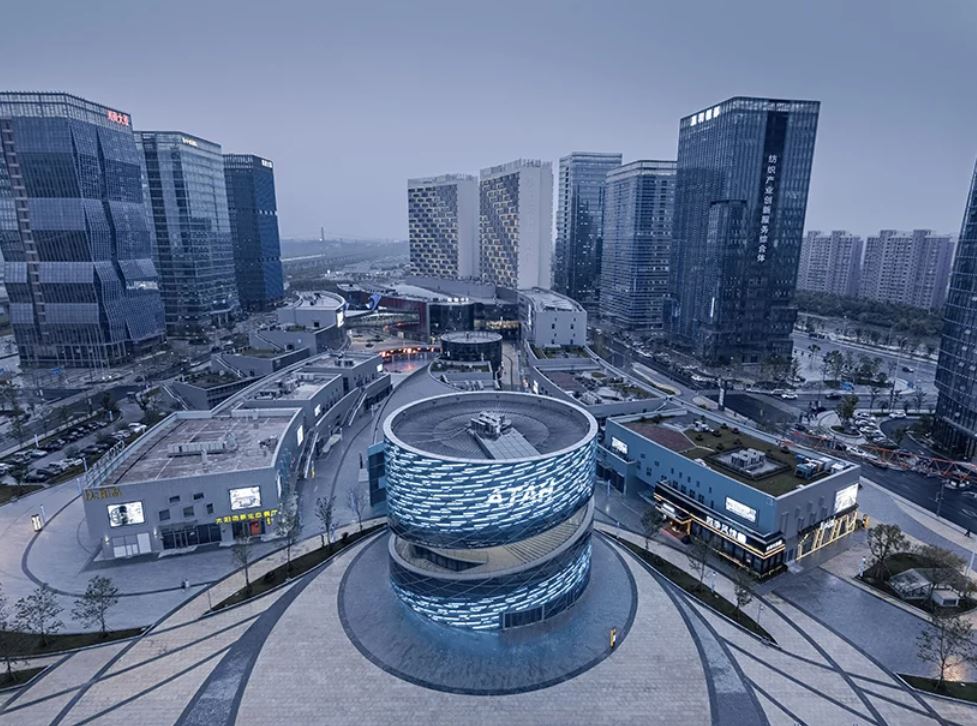
Los Angeles- and Shanghai-based studio ATAH has designed a spiral-shaped building for the CTC (China Textile Center). The structural design adopts the subversive nature of a Mobius strip, creating a continuous exhibition space and blurring boundaries between floors. During an artistic presentation, performers seem to be walking towards the center of the stage via a slow spinning staircase.
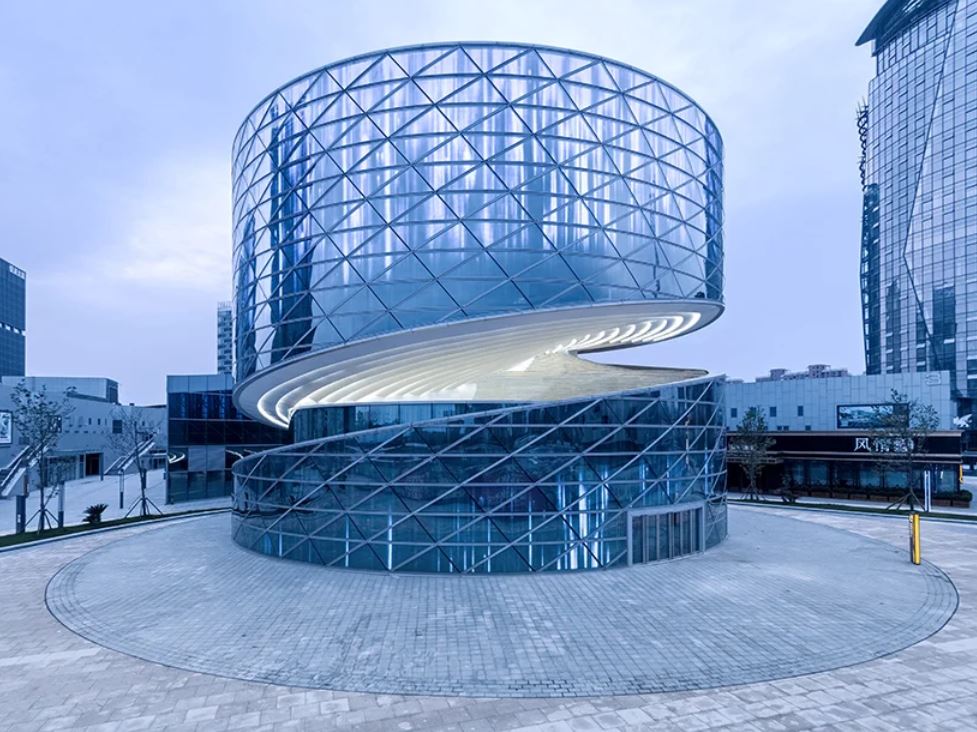
China Textile Center by ATAH (also header image)
The project involves a mix of commercial typologies. The heli-stage of the CTC is the epicenter of the commercial complex and is correspondingly located at the main project entrance, which is the symbolic center of the entire project.
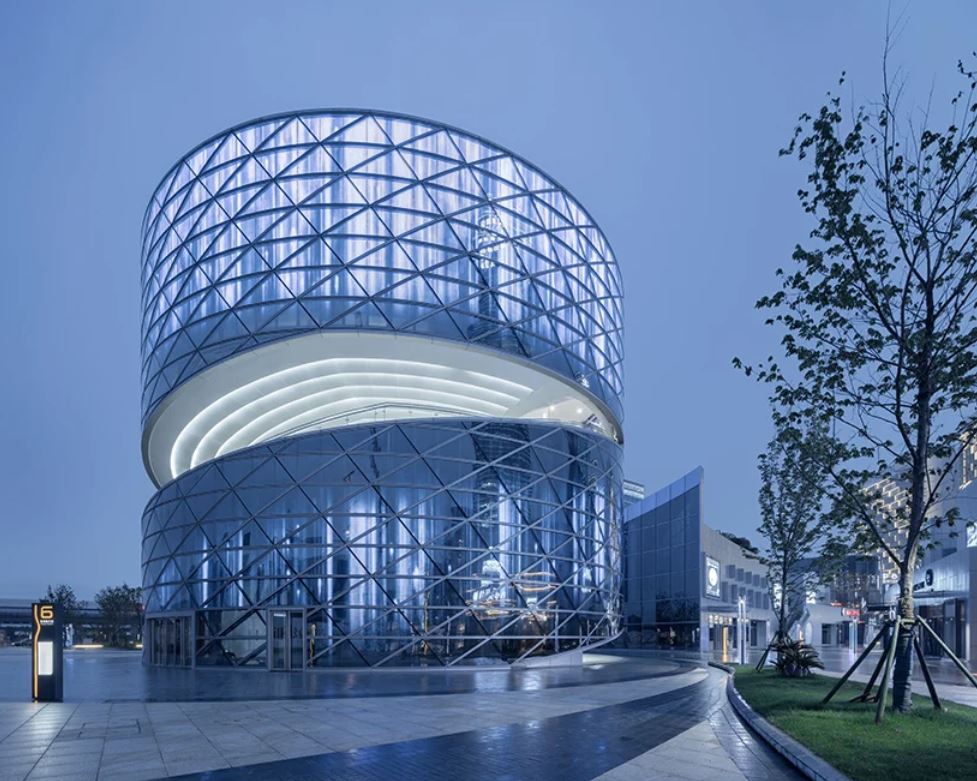
China Textile Center by ATAH
The main structure is the steel core in the center, which houses a central air well, and an elevator. Tangential to it is the changing geometry of the staircase from the first to the third. Horizontal steel members overhang to support the spandrel, while the space frame, in combination with a suspended cable at the periphery of its own surface creates a column-free space on the horizontal.
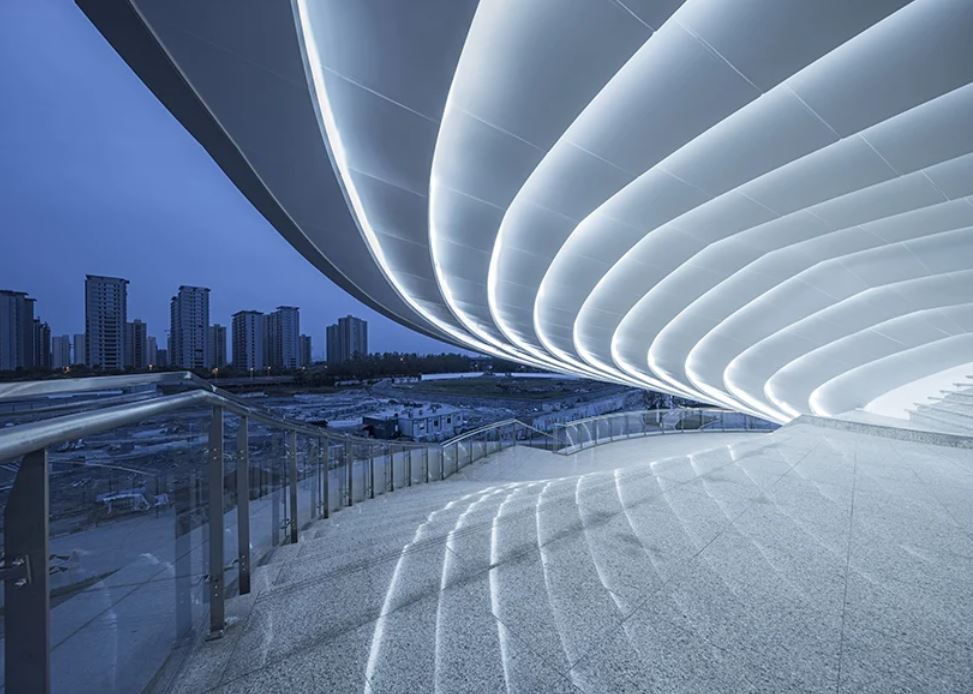
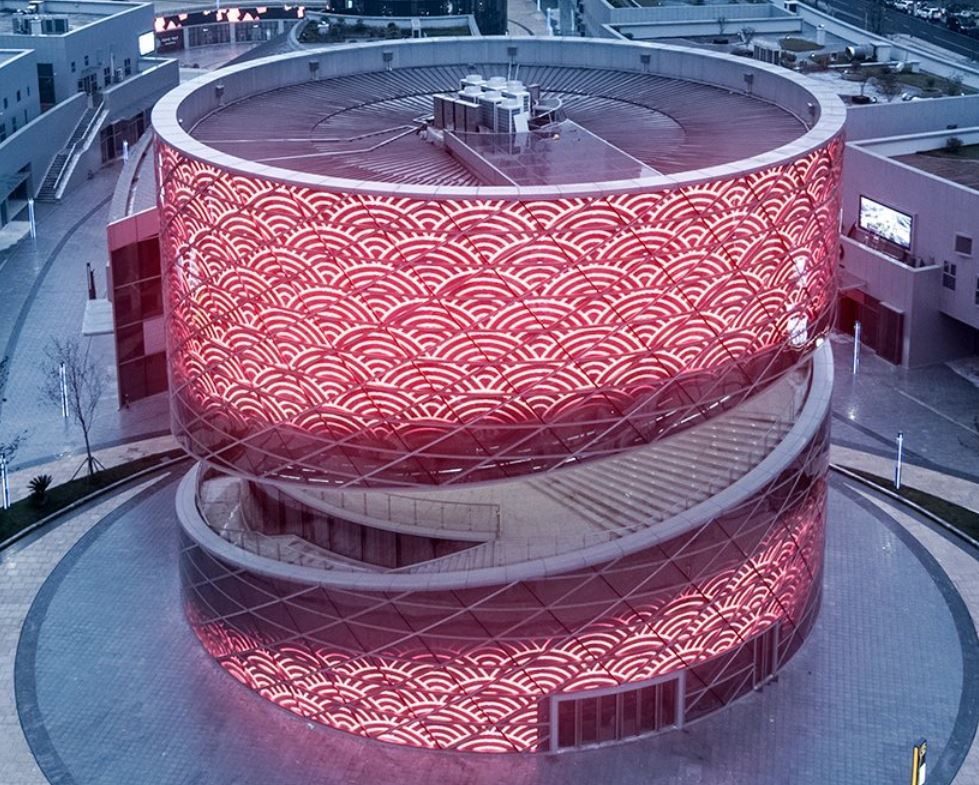
China Textile Center by ATAH
The interior design adopts the concept of weaving, using abstract elements such as the spinning wheel, while on the outside, the helical structure is covered with a geometric web that help achieve the visual effect of continuity between the exterior and interior.
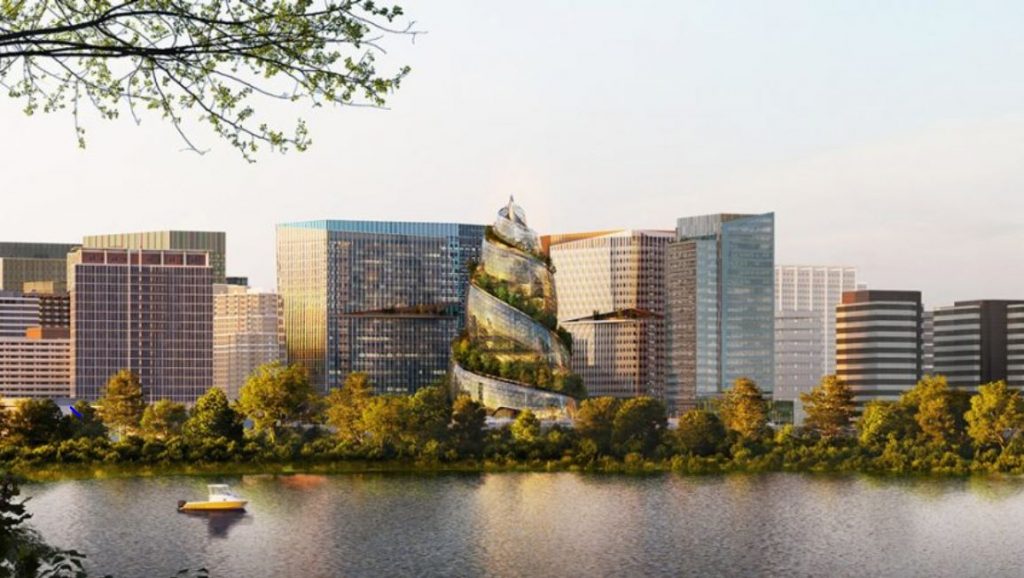
The Helix by NBBJ
International architecture firm NBBJ has conceptualized a spiral-shaped glass tower for the new headquarters of online retailer Amazon in Arlington, USA. Aptly named The Helix, the structure is characterized by outdoor walking trails spiraling up the building that create an environment prioritizing healthy work for employees. The green spaces will be watered by harvested rainwater.
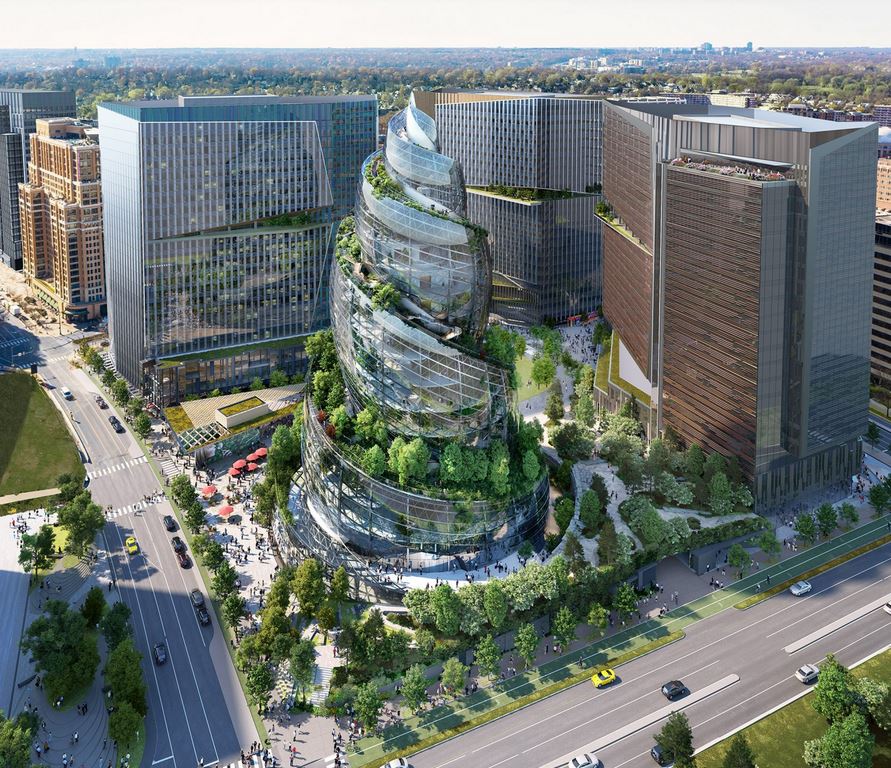
The Helix by NBBJ
The new headquarters comprises 260,000 square metres of offices, public gathering areas and street-front retail that seek to create a healthier workforce and community. Along with the rooftop hill climb, The Helix also includes indoor gardens, an artist-in-residence scheme and a meeting centre that has capacity for 1,500 people. Shops, restaurants and a farmers market will be located in a plaza at the base of the glass spiral.
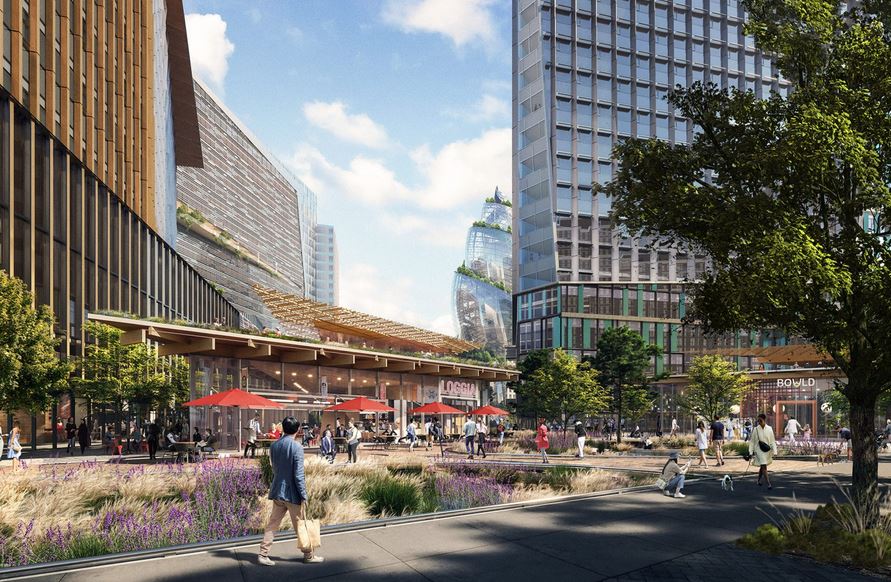
The Helix by NBBJ
NBBJ is aiming for a Gold LEED environmental certification for HQ2 and plans for the complex to be powered entirely by renewable energy from a solar farm in Pittsylvania County. The property will include an employee bike parking for 950 bicycles as well as protected cycling lanes and electric vehicle charging points on site.
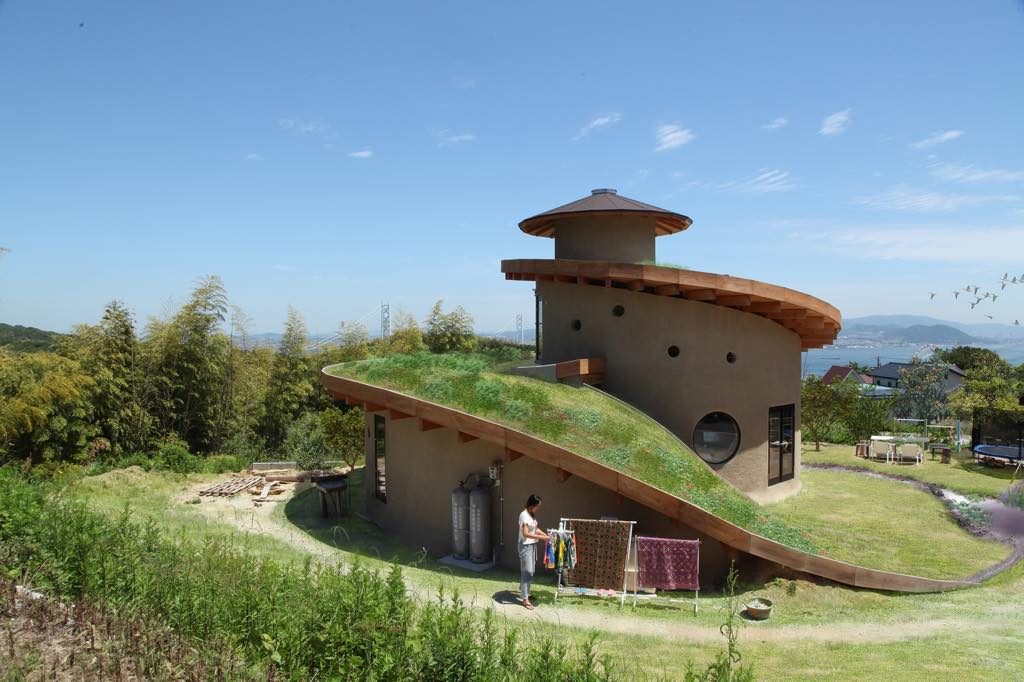
Spiral house by Ryuichi Ashizawa Architect & Associates
Japanese Ryuichi Ashizawa Architect & Associates has developed a residence for a family of four that features the roof planned as a spiral garden. The dwelling is located within the Awaji island, in Hyogo, Japan.
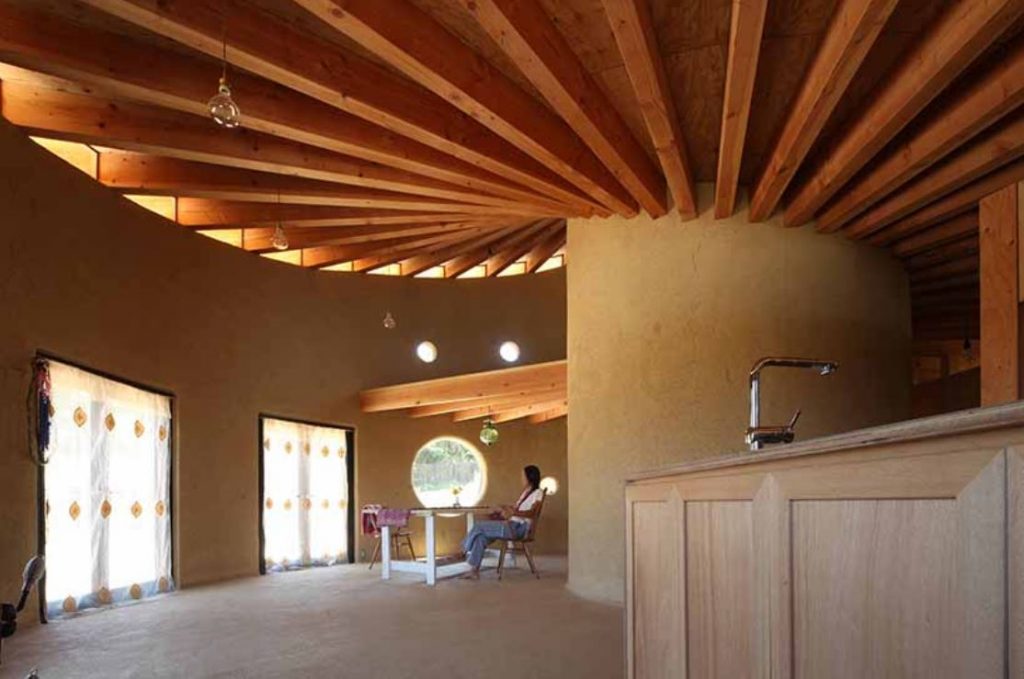
Spiral house by Ryuichi Ashizawa Architect & Associates
Commissioned to design ‘a house that grows along with the family‘, the team planned the house and its landscape at the same time. This resulted in a spiral, continuous plan that includes a space called ‘niha’ at its core, which is used for miscellaneous activities, be it meditation or gathering with friends, and rooms such as storage and bedroom on its fringes.
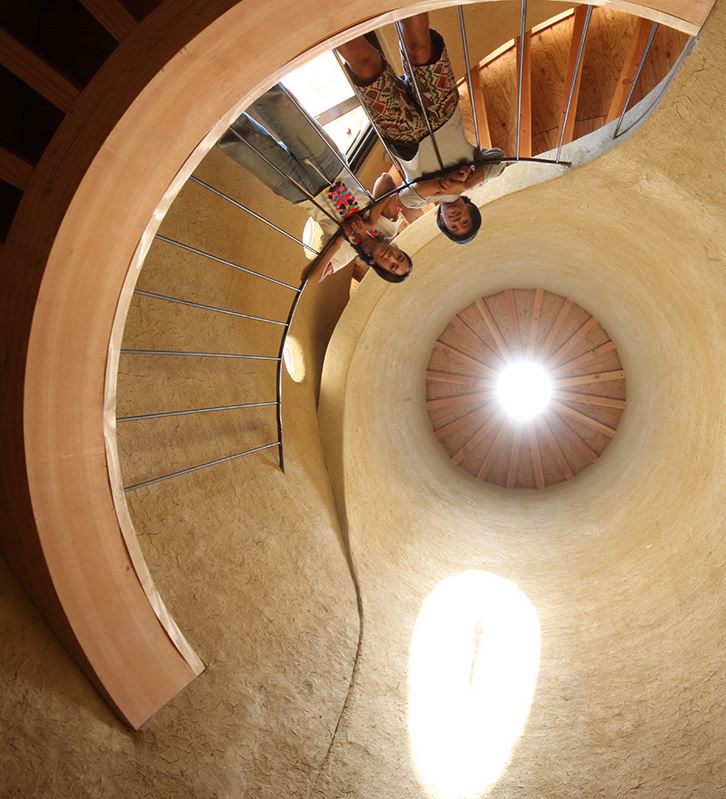
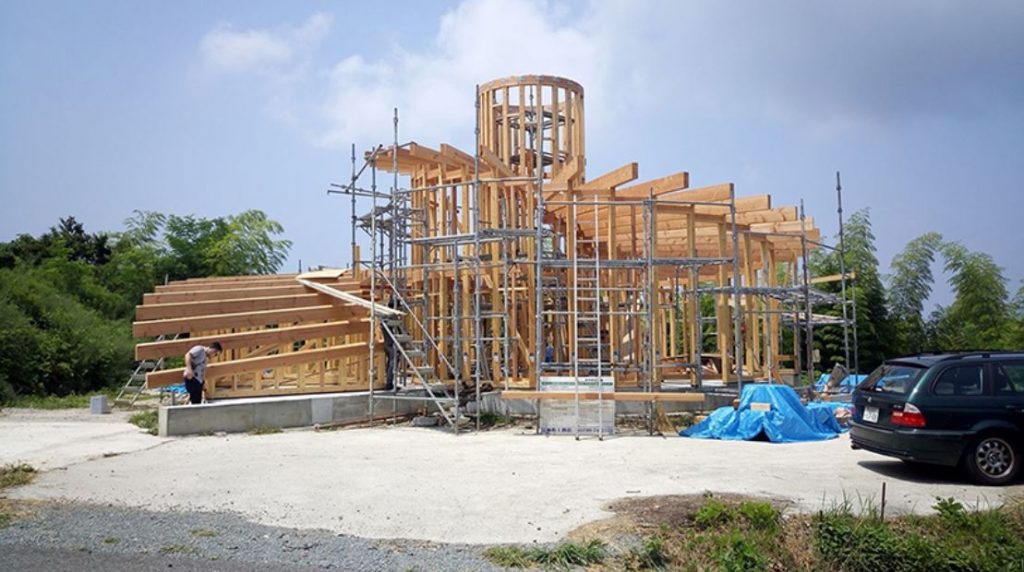
Spiral house by Ryuichi Ashizawa Architect & Associates
The spiral roof garden offers varying sunlight exposure, height and humidity, which helps grow plants with diverse growth requirements. Supporting the roof are timber beams hand-carved by local carpenters. The outer wall was scraped with a finishing of soil and mortar, while the interior wall was finished with Awaji island’s earth on top of interwoven lattice of bamboo collected around the site as a nod to the vernacular houses clad in soil. The floor was finished with tataki technique, allowing the interior to store heat and control humidity.
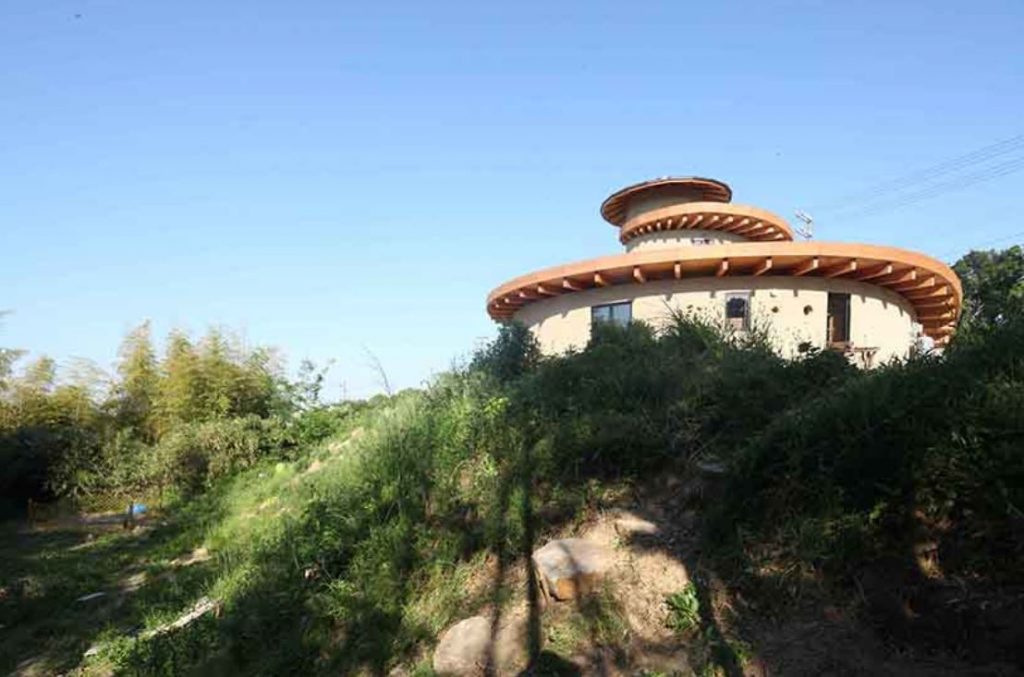
Spiral house by Ryuichi Ashizawa Architect & Associates
By introducing natural phenomena as inseparable parts of the house, the family will be one with nature, living in a house where the earth and trees grow.